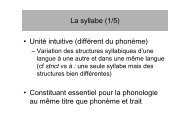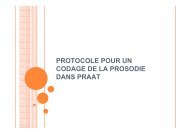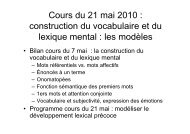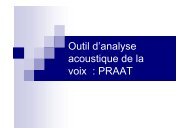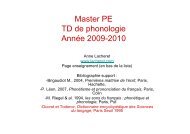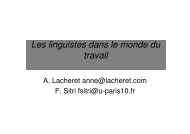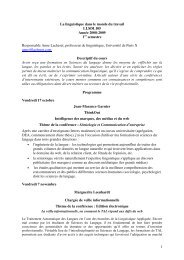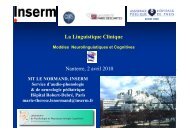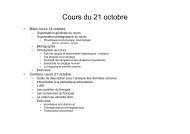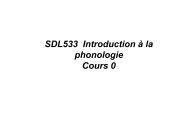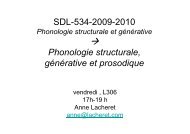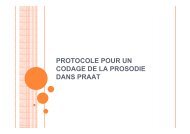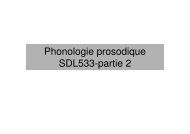Create successful ePaper yourself
Turn your PDF publications into a flip-book with our unique Google optimized e-Paper software.
sign of subjectivity will still be exercised, but it will operate in a private aural domain<br />
and elude entrapment by the servants.<br />
Although this suggests a radical re-enactment of "Vedrò," the idea of the<br />
courtroom comes from Beaumarchais, whose subversive play, Le mariage de Figaro,<br />
is the source of the libretto. In the play Act III begins in the Count’s throne room, and<br />
as in the film the Count renders a judgment before the household on Marcellina’s<br />
claim on Figaro. Da Ponte eliminated the courtroom and most of the dialogue, but<br />
distilled the essence into an aria for the Count, sung when he is alone in a room in his<br />
palace. In most performances specific legal consequences do not occur until a few<br />
numbers later. Ponnelle’s recuperation of the courtroom underscores the menace of the<br />
Count and the fear of the other characters. The physical layout follows the play, with<br />
the antagonists on opposite sides.<br />
The Gaze<br />
The gaze in "Vedrò" is another key element in the visual apparatus that<br />
replaces the heard voice. For characters inside the fiction the gaze assumes the<br />
rhetorical and discursive force of the voice; it takes over many of the functions of<br />
normal operatic music in opera film. For spectators outside the fiction, for whom the<br />
heard voice is real, the gaze views the fictional gaze and its relation to the interior<br />
voice. As for the Count, the voice he hears in his mind’s ear interacts with his powers<br />
of looking. The camera is often centered on his looking, situating the Count’s visual<br />
signature in cinematic point-of-view. In Ponnelle’s hands the technique exaggerates<br />
the subjectivity of the Count and visualizes his obsession with power over Figaro.<br />
Figaro’s inability to hear the Count’s voice robs him of some of the Count’s<br />
knowledge, but it also raises the stakes in the eye-to-eye contact. Especially near the<br />
end, extreme close-ups of eyes show their relationship as a battle of wills.<br />
The Count, on a raised throne, invokes a controlling gaze in the number. When<br />
the Count enters, he stares at Figaro, who bows to his superior. The visual pun on<br />
"Vedrò" ("Will I see") is striking, as the Count’s eyes measure the object of his<br />
contempt—as if looking could dispel the outcome he fears. The ironic coupling<br />
becomes a trope in the number. Moreover, sharply angled shots and strong point-ofview<br />
increase the subjective tension. Near the end of part 1 of the aria, accelerated<br />
images and expectant timpani rolls tell us something is about to happen.<br />
Part two brings change. With a faster tempo comes the first decisive visual<br />
gesture, as the Count sits down on the throne. The text is also different from here, for<br />
it addresses Figaro directly. Ponnelle’s camera reflects the increase in gestural rhythm<br />
in the music. The battle between the Count and Figaro intensifies through shot and<br />
counter-shot in which eyes fill the frame. The culminating coloratura has a sustained<br />
tight shot of the Count’s eyes—as if vocal virtuosity crowns his mastery over his<br />
servant. Ponnelle may be suggesting that Figaro is so intimidated, that this is what his<br />
fevered mind sees. I see it more as the camera’s gaze into what the Count believes he<br />
is accomplishing over Figaro: dominating him with his power. It shows the voice’s<br />
message rather than its effect on its object.<br />
The voice in "Vedrò" could be considered a lawless voice because it operates<br />
outside the usual constraints of vocal representation. Yet here the Law is invoked in<br />
the story. The Count uses legal power to reassert social control. He suppresses the<br />
heard or lawful voice, which becomes a tool of manipulation by others, and supplants<br />
69



